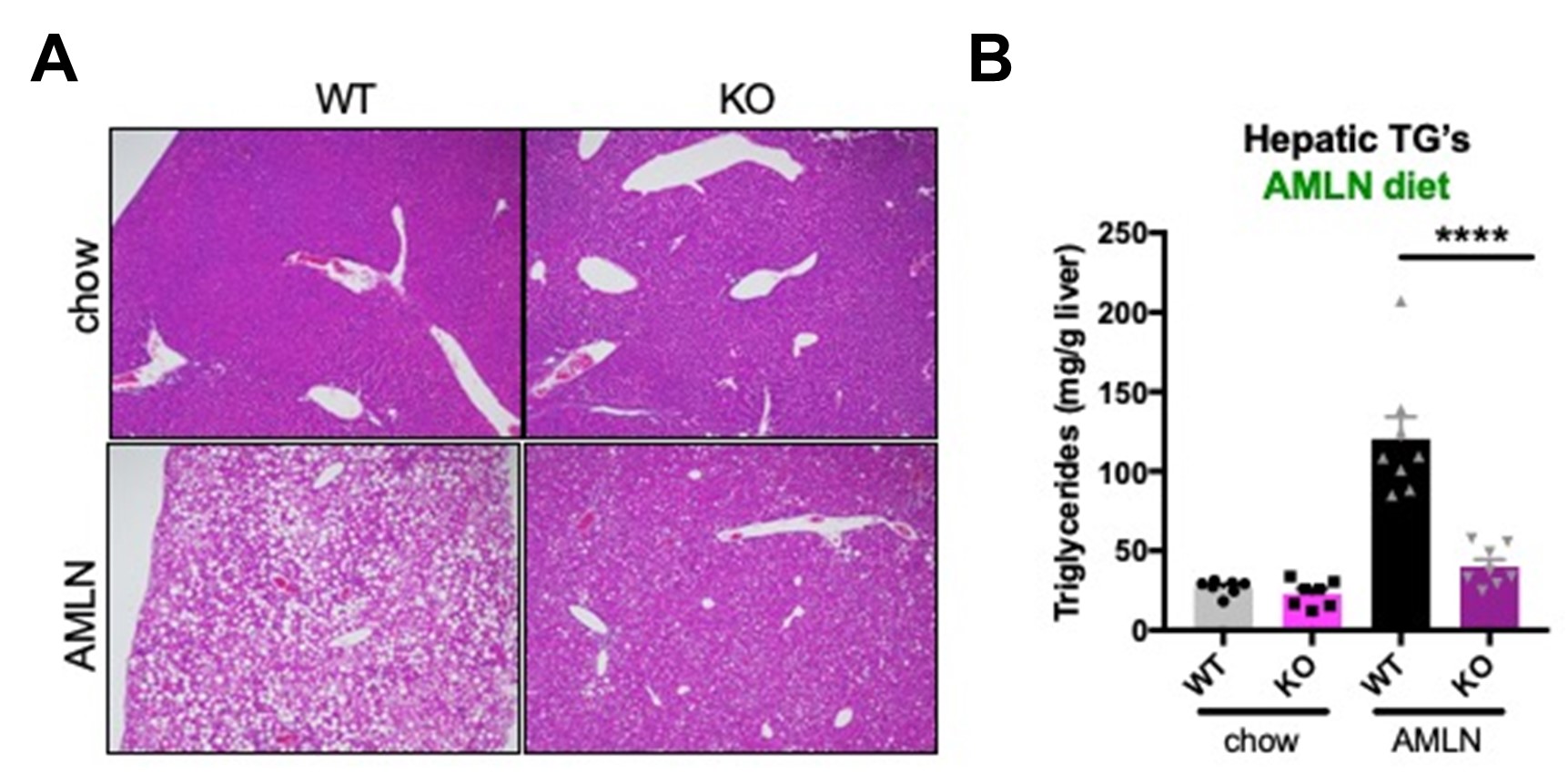Liver-targeted small RNA interference (RNAi) therapy to treat nonalcoholic fatty liver diseases (NAFLD), including nonalcoholic steatohepatitis (NASH).
Problem:
Nonalcoholic fatty liver disease (NAFLD) affects ~30% of individuals with an estimated economic burden of $32 billion annually in the U.S. If left untreated, NAFLD can develop into nonalcoholic steatohepatitis (NASH) and consequently liver cirrhosis and carcinoma. As NASH best predicts long-term adverse outcomes, like liver failure, the FDA has highlighted the need to identify therapeutic targets for treating NASH. Currently, no approved pharmacologic therapies exist for NASH or NAFLD.
Solution:
Potential small molecule inhibitors for treating NAFLD have demonstrated limited success in clinical trials. For example, ACC1/2 inhibitors fail to treat systemic disease symptoms like elevated plasma triglycerides while the FXR inhibitor, Intercept, causes side effects resulting in medication discontinuation. Thus, specifically targeting liver cells via small RNA interference (RNAi) would circumvent the issues found with small molecule inhibitors.
Technology:
The Arany lab identified the protein folliculin as a key regulator of liver metabolism. Liver-specific deletion of folliculin completely prevented and reversed diet-induced NAFLD progression in a transgenic small animal model. In addition, targeting folliculin did not lead to any compensatory liver activation, which plagues small molecule-based strategies. As specifically targeting liver cells with RNAi-based therapies is already clinically approved in other liver diseases, targeting folliculin with a liver-specific RNAi therapy could not only minimize systemic side effects, but also both effectively treat and reverse NASH and NAFLD.
Advantages:
- Treats and reverses NAFLD symptoms by more than 50% in two different preclinical models
- Provides tissue-specific targeting of the liver, which is key for alleviating systemic side effects
- Targets folliculin, a key regulator of liver metabolism, which is important to avoid compensatory liver activation

A) Histological visualization of liver fatty acids under a normal diet (chow) and a high-fat/high-fructose diet (AMLN) in control mice (WT) and liver-specific folliculin knockout mice (KO). B) Quantification of triglyceride content, demonstrating folliculin knockout mice (KO) are protected from diet-induced NAFLD.
Stage of Development:
- Target Identified
- Preclinical Discovery
Case ID:
20-9201-TpNCS
Web Published:
2/8/2024
Patent Information:
| App Type |
Country |
Serial No. |
Patent No. |
File Date |
Issued Date |
Expire Date |